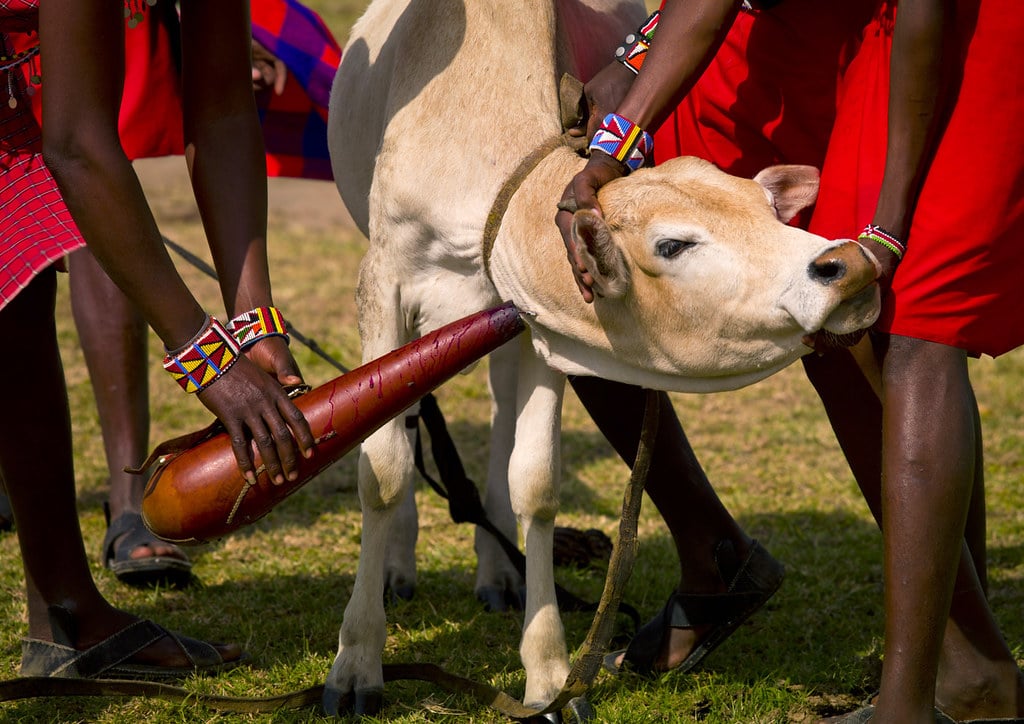Traditional blood collection from livestock in Karamojong culture involves a unique method of collecting blood from their livestock, primarily cattle, for nutritional and ceremonial purposes. In contrast, modern medical facilities now conduct conventional blood collection for transfusions, with outreach programs addressing community health needs, Mirama hills safaris well comes you to experience blood collection in Karamojong tribe not modern but the local way for food.
Karamojong food primarily consists of livestock products like milk, blood, meat from cattle, goats, and sheep, and grains such as sorghum. They utilize all parts of their animals, even draining blood to be mixed with milk, and also eat meat byproducts and sun-dried meat dishes like Emuna. Their diet is supplemented with locally grown crops like beans, maize, and millet, and a sorghum-based porridge and local brew are common.
Milk and Blood is significant portion of the Karamojong diet comes from their livestock. They commonly drink fresh milk and also consume blood, which is drained from livestock and mixed with milk.
Meat from sheep and cattle meat are eaten, as are other animal products. The Karamojong are careful to use every part of the animals, not wasting any resources.
A traditional highly nutritious, sun-dried meat dish, Emuna, can be made from various animals but is often made with beef. It is a staple for times of scarcity and a dish prepared for special occasions.
Other Food Items are Street Food at local markets; you can find street food items like liver and a mixture of beans and maize known as D30.
Sun-Dried Ingredients dried meat, as seen in Emuna, can also incorporate roasted cucumber and roasted peanuts or sesame seeds.
The Karamojong are semi-nomadic pastoralists whose culture and diet are centered on their herds. Blood is a vital food source, rich in protein, and is consumed mixed with milk as a delicacy or given to the sick.
Process of traditional collection involves shooting an arrow into the cow’s jugular vein, which allows the blood to flow out.
Purpose the blood is collected by women in calabashes. A stick is used to mix the blood until the fibrin separates, creating a nutritious and protein-rich meal. The practice is intended to supplement the diet and help protect children from malnutrition.
Circumstances this is a non-lethal process for the animal. It is done periodically, and the animal is not killed intentionally for the food. In seasonal grazing camps, men may live almost entirely on milk and blood.
The main staple food of the Karamojong people is the highly nutritious cereal grain sorghum. In their homesteads, they store what they grow in granaries for up to three years.

